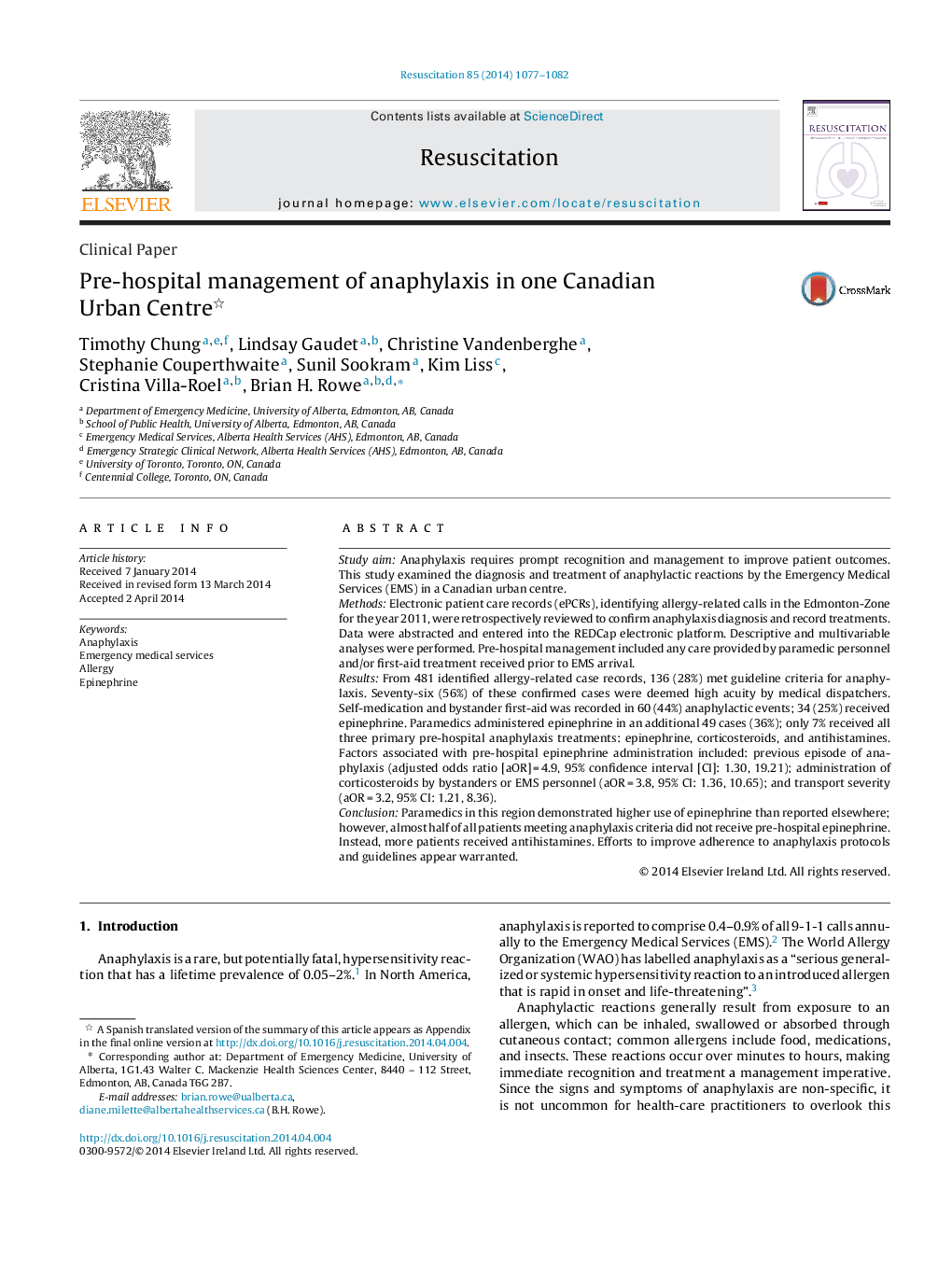| Article ID | Journal | Published Year | Pages | File Type |
|---|---|---|---|---|
| 5998112 | Resuscitation | 2014 | 6 Pages |
Study aimAnaphylaxis requires prompt recognition and management to improve patient outcomes. This study examined the diagnosis and treatment of anaphylactic reactions by the Emergency Medical Services (EMS) in a Canadian urban centre.MethodsElectronic patient care records (ePCRs), identifying allergy-related calls in the Edmonton-Zone for the year 2011, were retrospectively reviewed to confirm anaphylaxis diagnosis and record treatments. Data were abstracted and entered into the REDCap electronic platform. Descriptive and multivariable analyses were performed. Pre-hospital management included any care provided by paramedic personnel and/or first-aid treatment received prior to EMS arrival.ResultsFrom 481 identified allergy-related case records, 136 (28%) met guideline criteria for anaphylaxis. Seventy-six (56%) of these confirmed cases were deemed high acuity by medical dispatchers. Self-medication and bystander first-aid was recorded in 60 (44%) anaphylactic events; 34 (25%) received epinephrine. Paramedics administered epinephrine in an additional 49 cases (36%); only 7% received all three primary pre-hospital anaphylaxis treatments: epinephrine, corticosteroids, and antihistamines. Factors associated with pre-hospital epinephrine administration included: previous episode of anaphylaxis (adjusted odds ratio [aOR]Â =Â 4.9, 95% confidence interval [CI]: 1.30, 19.21); administration of corticosteroids by bystanders or EMS personnel (aORÂ =Â 3.8, 95% CI: 1.36, 10.65); and transport severity (aORÂ =Â 3.2, 95% CI: 1.21, 8.36).ConclusionParamedics in this region demonstrated higher use of epinephrine than reported elsewhere; however, almost half of all patients meeting anaphylaxis criteria did not receive pre-hospital epinephrine. Instead, more patients received antihistamines. Efforts to improve adherence to anaphylaxis protocols and guidelines appear warranted.
